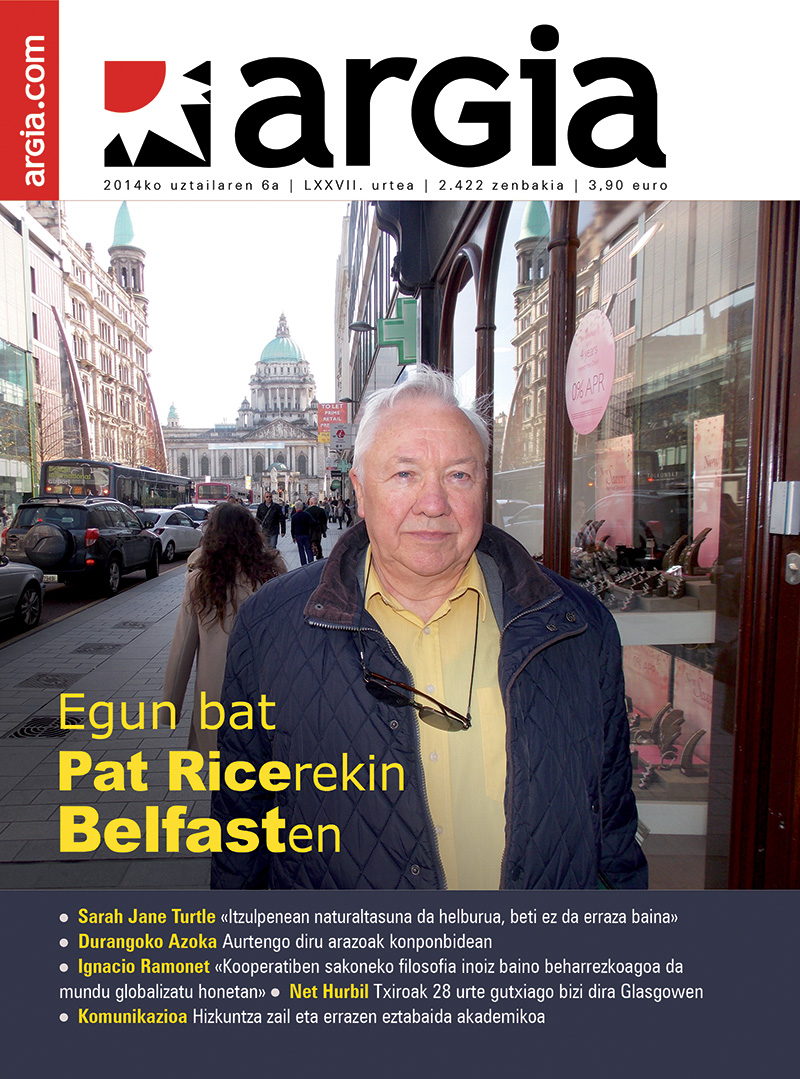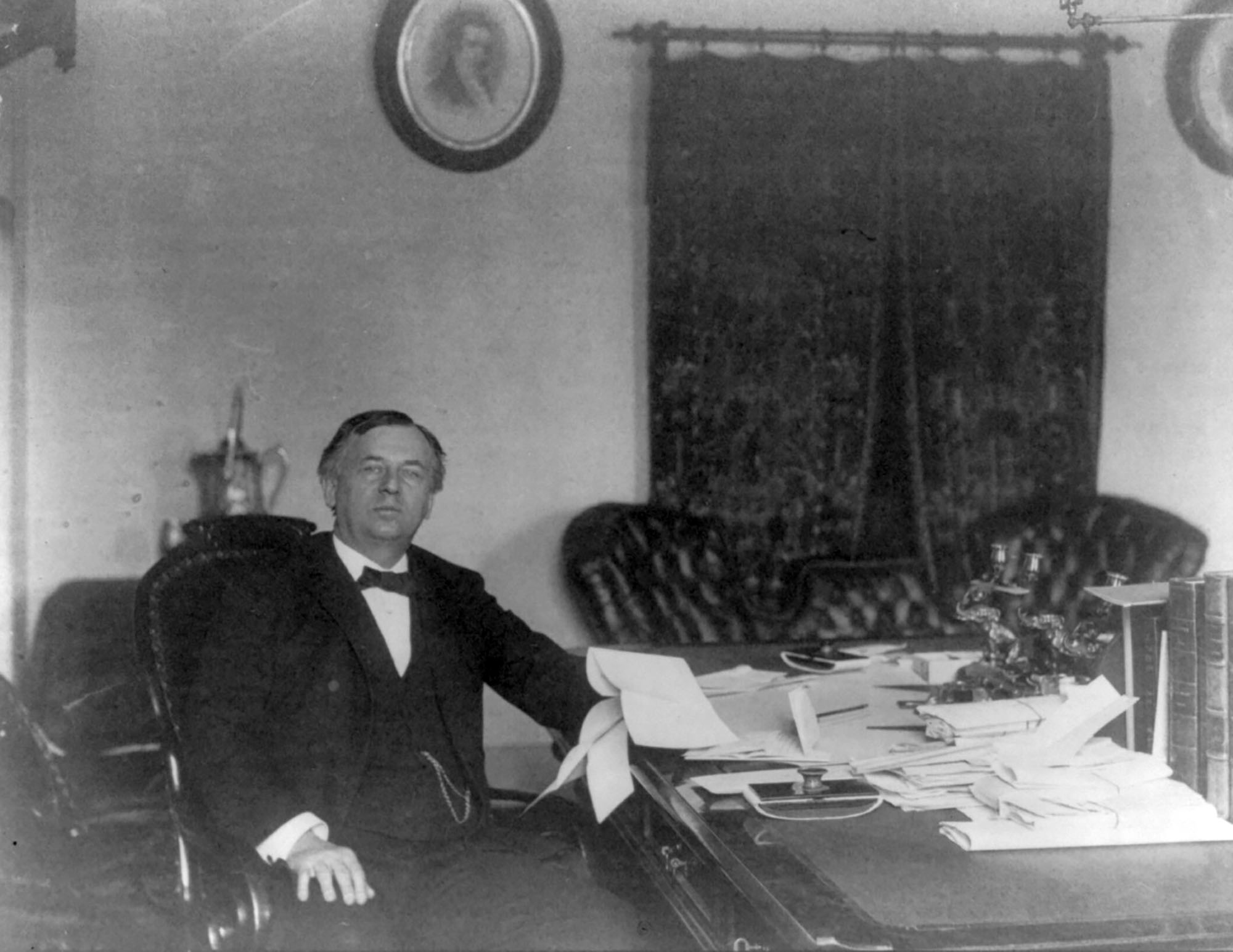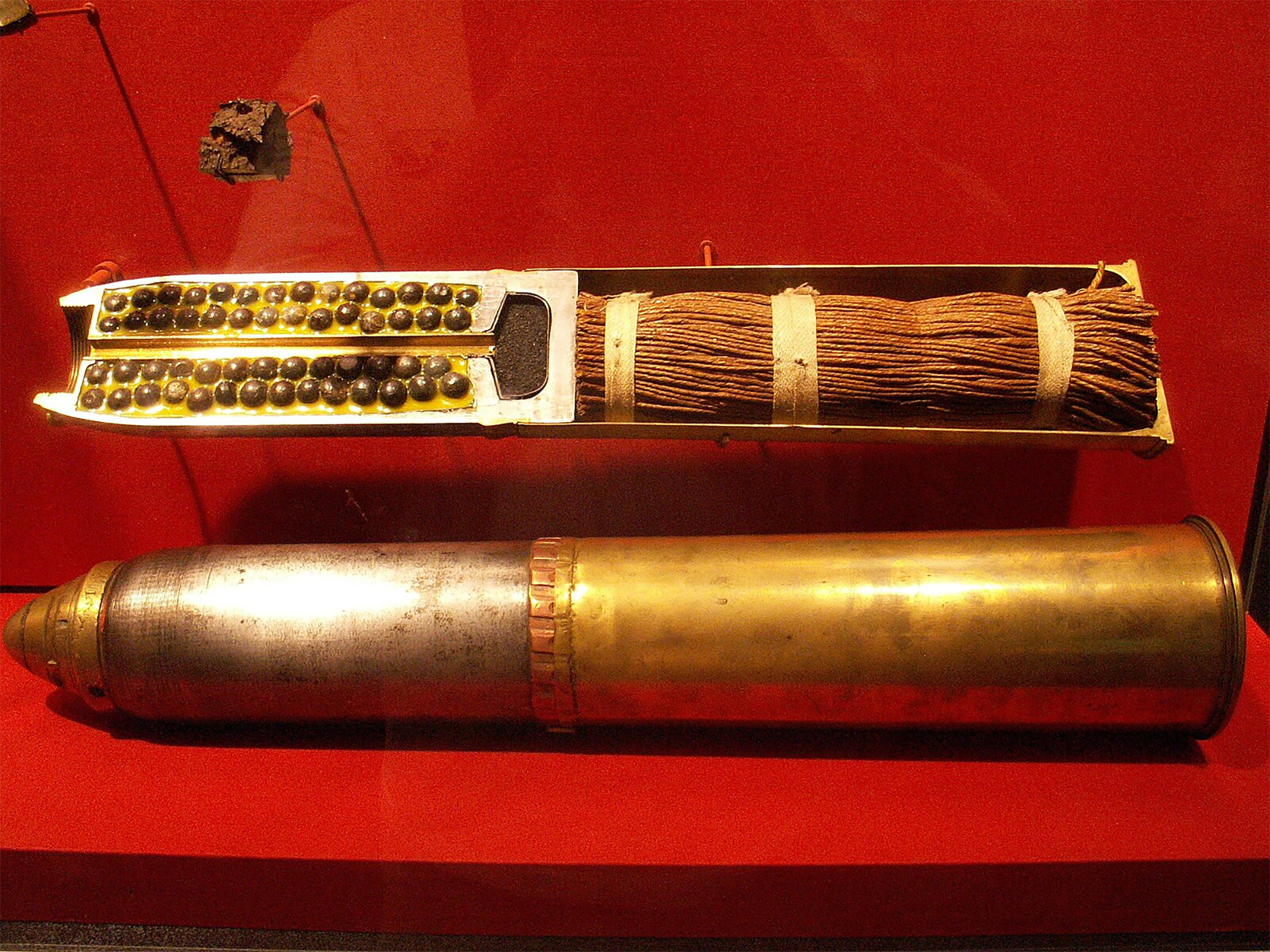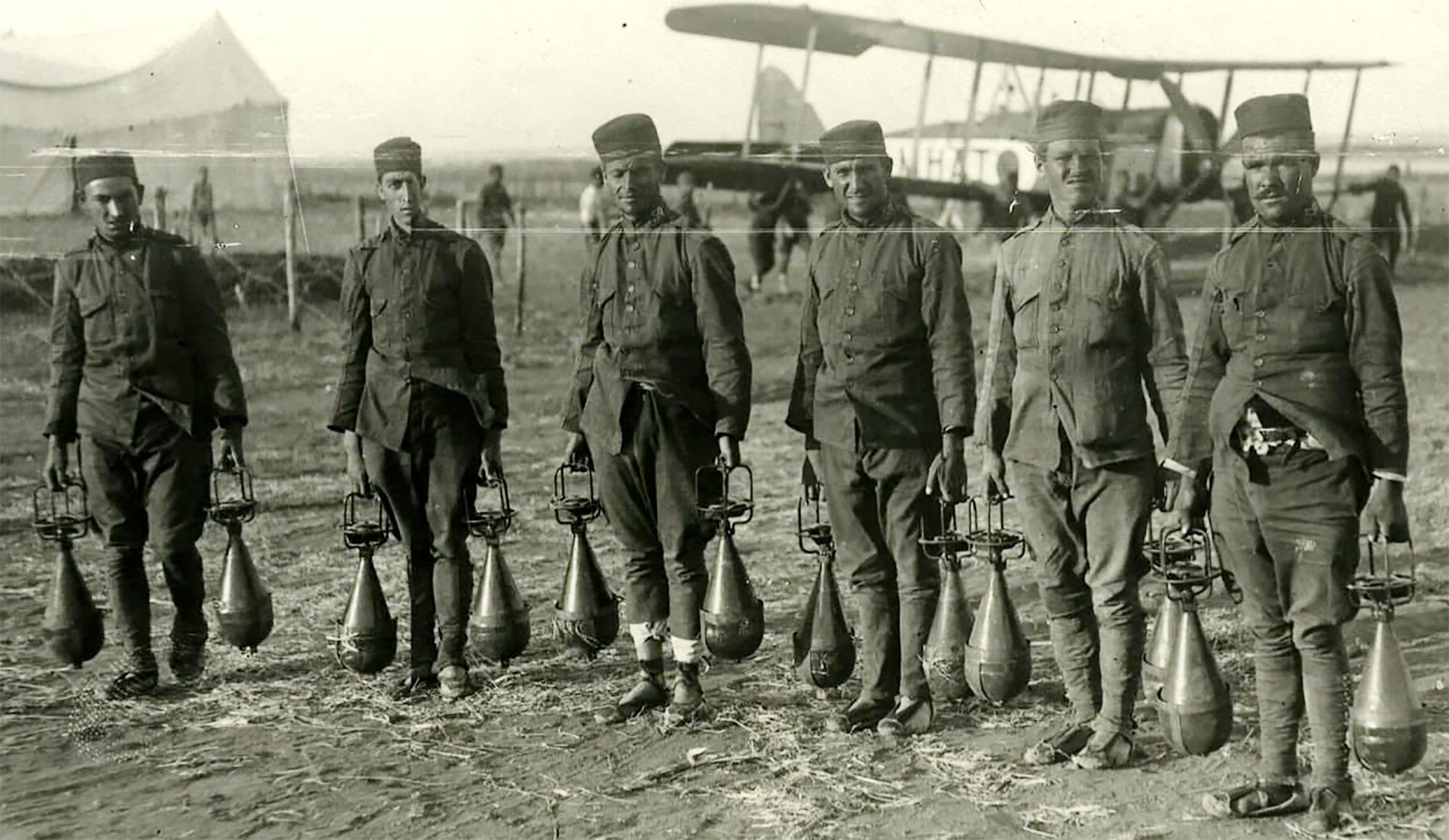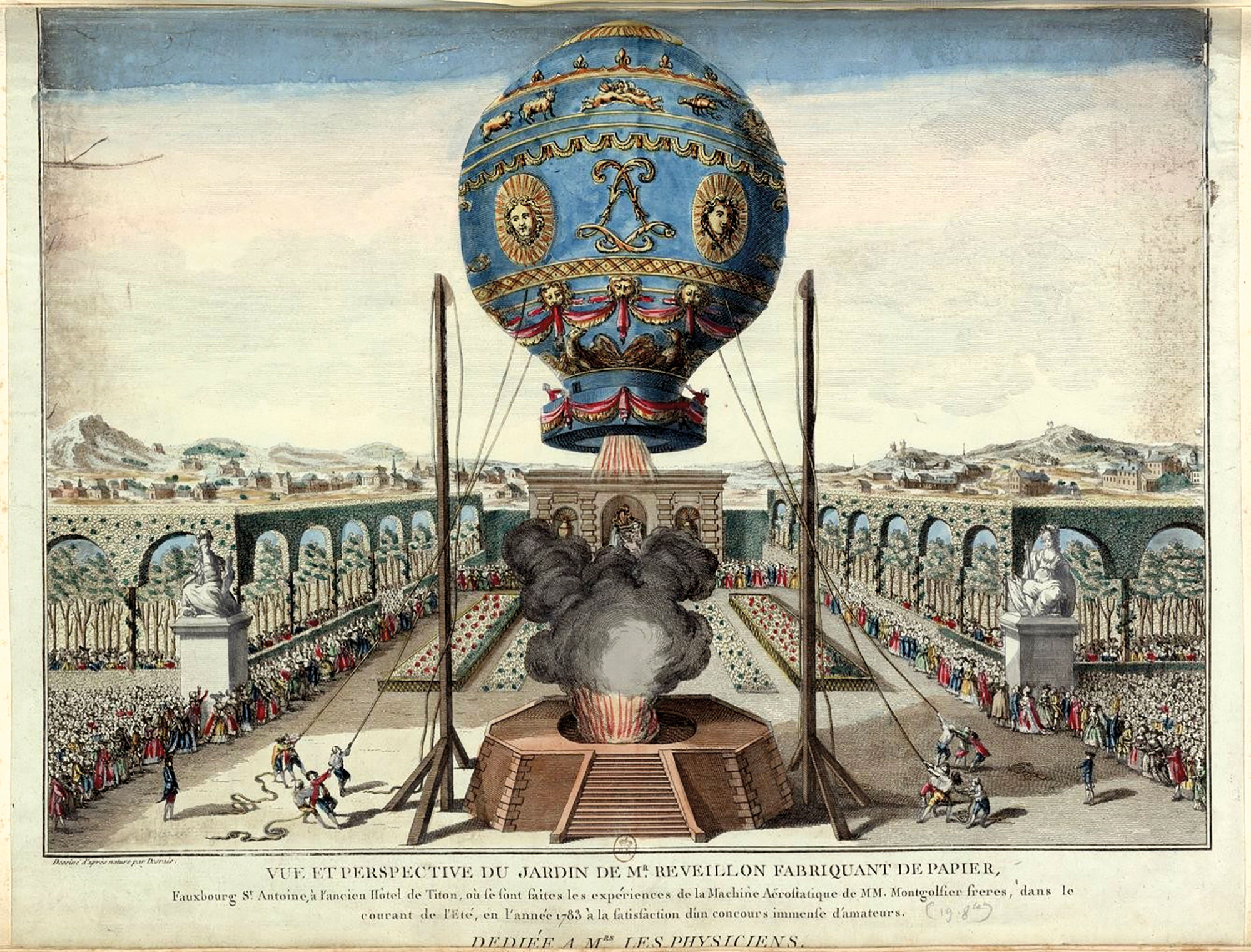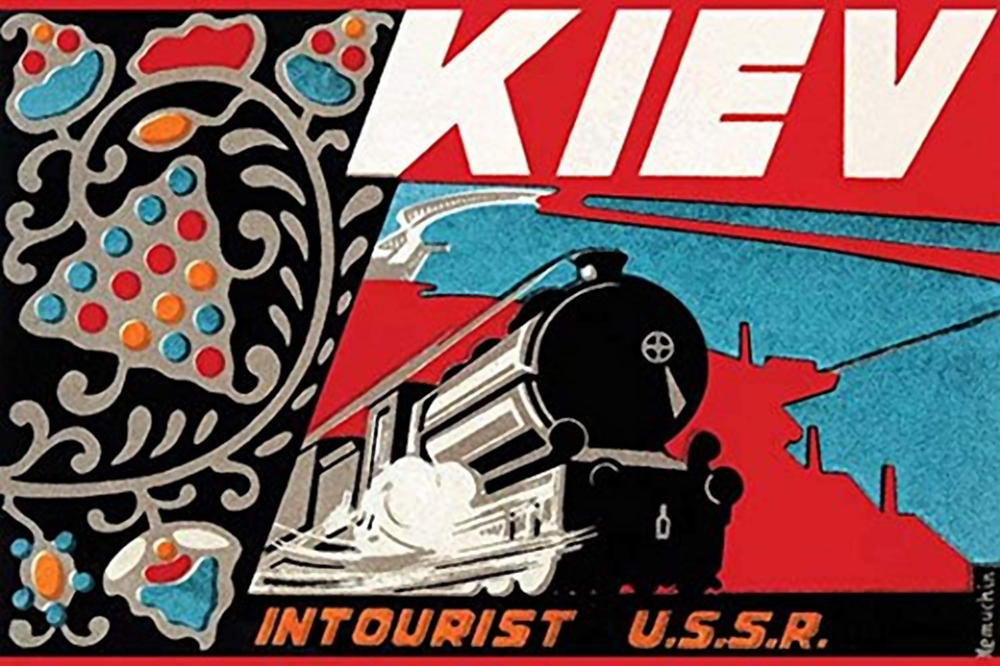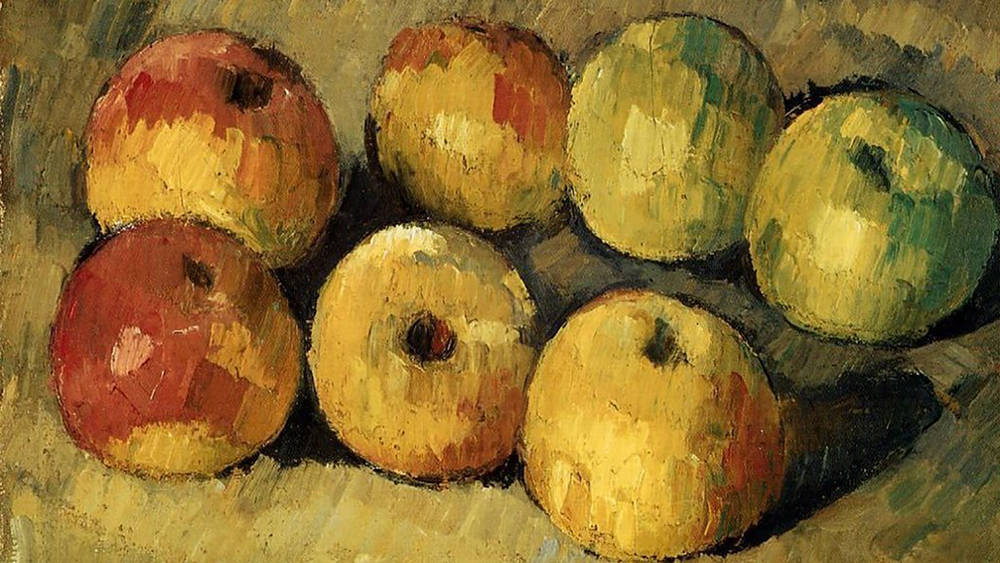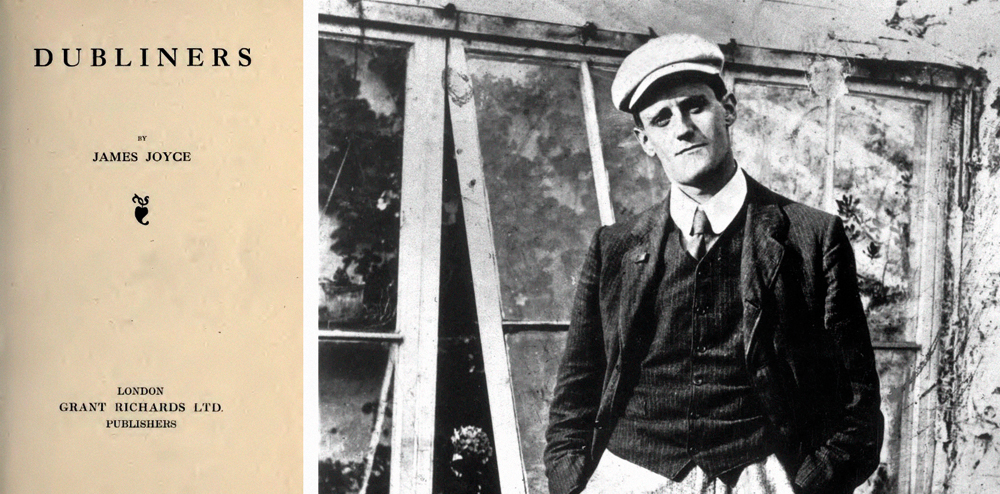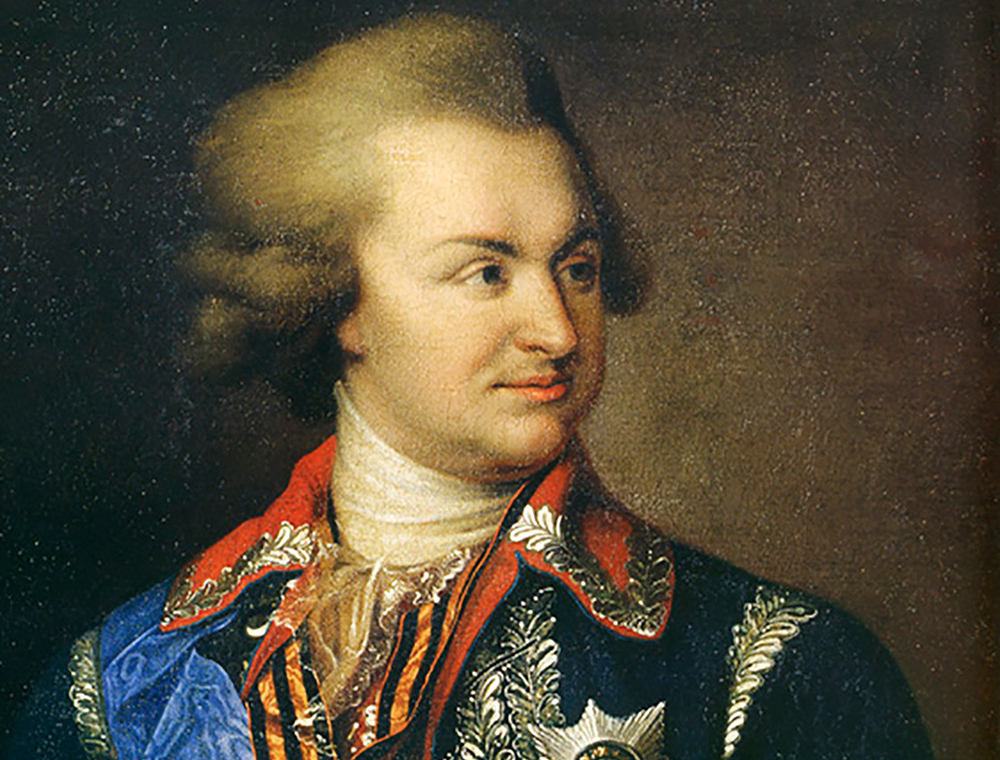History of the German fugitives from the Ciudadela de Pamplona
- On 8 November 1916, the British warship Paramount intercepted a small skate on the English Channel. Inside, they met a group of Germans who had fled Pamplona and Alcalá. How did they get there? The chronicle of the leakage of the Germans seems like a script for cinema.
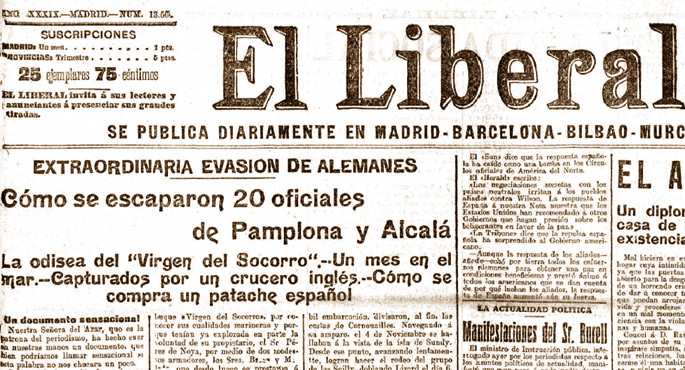
During the First World War, in the City of Pamplona there was a group of Germans who were going to bathe at the Arga River every day. In 1919, the City of Pamplona approved the installation of a bathroom house on the shore of the Arga River. It was not long before that area was told the river of the Germans.
The people from the City of Pamplona came from Cameroon, as Africa was also a fighting place during the First World War. After the German surrender of Cameroon on 15 February 1916, some 1,000 soldiers moved to the Spanish colony of Rio Muni. The Allies did not trust them and asked King Alfonso XIII to hand over the Germans to Spain.
The Germans and some Cameroonians, led by governor Karl Ebermaier, entered the merchant ships Isla de Panay and Catalonia, left the port of Santa Isabel and crossed Las Palmas de Canarias on May 4, 1916 they arrived in Cadiz, where they had two trains waiting. Arrival at the Madrid train station took place on 5 May. There was the whole German colony of Madrid. It was time to disperse a group of a thousand people at the station. For this question, J.A. We continue with the book of Tojo Ramallo Boat Hunters. According to the report, the senior officers, some 60, stayed in Madrid, 142 soldiers from Alcalá, the bulk was transferred to Zaragoza, sent several dozen to Aranjuez, Teruel and Valladolid, took the Catholics to Orduña and sent 217 soldiers to the City Headquarters.
German about Cities
Those from Cameroon arrived at the Pamplona train station on 6 May. These included two captains, ten officers, five doctors, 147 soldiers, a governor ' s counsellor and 52 civilians. Among the latter are a woman, several engineers, a nurse, railway staff, porters, two architects and an officer of the merchant fleet. There were also authorities in the reception of the Central City, including the Bishop of Pamplona, José López Mendoza and García.
The relocation of the Germans was not improvised, the Mayor of Pamplona, Manuel Negrillos and Goicoechea, brought out a side that demanded that the Germans treat with respect, neutrality with the war of the Spanish State was often fictional. The mayor wanted to avoid confrontations between adophiles and germanophiles.
The City of Pamplona was a concentration camp. But in practice the regime was rather lax, the Germans who had some money were immediately housed in the hostels and pensions of the Head of City, and very soon, on 27 May, organised a party in Pamplona with the Germans who came from Bilbao and San Sebastian.
The Sanfermines arrived and the Germans enjoyed the confinement and comparison of giants and kilikis, and on the other hand, the elegance of the torero Juan Belmonte surprised those of Europe. The Sanfermines unwaged by the war were in 1916, the arrival of fewer foreigners gave prominence to the Germans, El Pensão Navarro took a section in German each day, where he published information about the war and the program of the fairs.
The flight of the Germans in progress
The officer who organized the flight from Pamplona was called Karl Koch. The flight took place in early October 1916 and in its preparation, in addition to the military members who were part of the concentration camps of Pamplona and Alcalá de Madrid, German officials and spies such as General Ebermaier, Secretary Kindling of the Consulate of Vigo and the young Hans Reupke, who starred alongside Koch.
We will tell the story of the flight from Akaba. On January 3, 1917, The Liberal of Madrid dedicated half of his skin to the account of the Germans' escape. The chronicle of El Liberal looks like a screenplay for film. But the most powerful source of renewed flight is Sergeant Erich Robert Petersen, who was involved in the flight. In 1933, Petersen left us a book as a newspaper, Durch Busch und Blockade.
The Koch plan was very simple. To buy a boat, the fugitives had to leave Alcalá and Pamplona and reach some Galician port. Once this has been achieved, to sail, to borrow the coasts of Ireland and Scotland and to reach some port of Germany along the coast of Norway.
Fugitives were faced with the costs of the ship and the costs of providing the voyage. Money was not a problem for many Germans, who received an extra Christmas pay on arrival in Spain. On the other hand, the fugitives had to be young and if they had been at sea, better. The election was held by Ciudad Real Koch official, accompanied by Walter Grätshuss and Dietrich Kiltlass.
Koch's contact outside the Citadel was Hans Reupke. He took care of the boat. To this end, he contacted Mr Beumer. Kindling, who presented Reupk to the crew of the merchant vessel Belgrano. Belgrano was held in the port of A Coruña since the beginning of the war, Reupk, guided by the crew, met German Wolhaupt and with his help built the fishing boat of the patatxe Virgen del Socorro class. The fishing boat was owned by Felipe Pérez de Noia. Perez had to take the boat to Vigo to get the procedures for buying and selling.
All of this was joined by Reupk in September and contacted the fugitives through the telegraph and the mail. Five people were part of the group that was going to leave the City of Pamplona/Iruña. Together with Koch, Emil Schulz, Karl Schauf, Jacob Lohrmann and the aforementioned sergeant, Erich Petersen. There were seven in the Alcalá team, as well as Gräutschuss and Kittlass, Karl Niemeyer, Leopold Kütz, Bruno Rassak, Hans Fritsche and Max Jutersonke.
In addition to these twelve, eight people were waiting in Vigo, Hans Reupke, seaman Alex Grossmann, Dr. Hans Rgenuberg, the sailor of Werth Herman Enken and the four officers of merchant Goeben: Henrich Zuppe, Karl Hilburgh, Maxe Griebel and Emil Stehr. They should have everything prepared for the arrival of Pamplona and Alcalá. Reupke and Zuppe took over the purchase of supplies and, in the evening, the transfer to the German merchant Werth, held in the port of Vigo.
Leakage of Germans executed
The flight started in Pamplona/Iruña. On 3 October 1916, Karl Koch moved to the Ciudadela hospital with belly pain, after being treated by Governor General Salcedo, who authorized treatment in Lekunberri from 3 to 8 October. He'll come to Lekunberri and rent a car to a German named Meyer. On the morning of 5 October, just over four kilometres from Pamplona will meet with the rest of the Citadel. They have come to Palencia through Vitoria-Gasteiz, at dusk, as if they were strangers, and they have taken the Vigo train. Not everyone will arrive by train. Lohrmann and Petersen have come down to the station of Redondela, where an agent named Riedel awaits them, who will travel in a carriage the way to Vigo.
It is 6 October and the seven of Alcalá have arrived in Vigo. Their trajectory has not passed without surprises. There has been confusion with the telegram. Gräutschuss is not clear if Pepita, a car for Palencia, has to arrive. Pepita has finally reached Palencia by car and from there to Vigo by train. On the same day, the fishing vessel Virgen del Socorro has made an entry manoeuvre in the port of Vigo and has been moored by the vessel Werth.
The twenty are ready to start the journey. In the sale of the patacha Virgen del Socorro they have paid 11,150 pesetas and added the cost of supplies, they have contributed a total of 17,693 pesetas. The twenty have embarked one by one on the Werth and from there they have moved to the Virgen del Socorro, which is next door. The early morning of 7 October, the Andurian tugboat will leave Virgen del Socorro in front of the Cyan Islands. Before arriving there, they had the opportunity to greet the Spanish warship Gaviota.
It is 24 October and the escape plan has changed radically, as the temporary has significantly affected the cross and mastery of the Virgen del Socorro. Under these conditions, it is not possible for the coasts of Ireland and Scotland to be surrounded by wind. They're at the entrance of the English Channel and they've decided to play there. On 6 and 7 November the English destroyers have been dodged, but on 8 November the English warship Paramount will spot the duck. At first they have been taught the Dutch flag, but the British have not swallowed the lie. They will be transferred to Ramsgate in Great Britain, where they will remain in their twenties until the end of World War I.
Apparently, there are those who have seen something in Vigo and the information services of the allies have been put in place right away. The French consul is going to report the flight to the Spanish military authorities, but the latter are not going to start any persecution by Virgen del Socorro. On the other hand, on 21 November, following the arrest of the patache, the British Government will send the Spanish Government a message of revulsion through the Madrid Ambassador. The twenty fugitives were already incarcerated in Ramsgate prison.
On 21 January 1917, on the occasion of the escape of the vox populi, the Germans organized a party at the Parisien Theatre in Pamplona. The head of the city was just a party. n
Estatu espainarreko prentsa Gerra Handian bitan banatu zen, germanofiloak eta aliadofiloak. El Liberal aliadofiloak 1916ko abenduaren 11ko azalean Nafarroako prentsa germanofiloaren jokabidea salatu zuen.
Hainbat ospetsuk eratu berria zuten batzorde bat nafar-frantses soldadu zaurituak sustengatzeko. Kazetariak nafarren arteko anaitasuna eta Antzinako Erresuma ekarri zituen gogora. Apezpikuak diru-biltzea bultzatu zuen eliz-barrutian eta bildutako dirua Baionako apezpikuaren esku uzteko asmoa adierazi. El Liberalek ez zuen egokierarik galdu Nafarroako prentsa germanofiloa salatzeko. Urte bereko azaroaren 21ean Alemaniako Gurutze Gorriaren aldeko festa antolatu zuten alemanek Iruñeko Euskal Jai pilotalekuan, eta 3.629,15 pezeta bildu. Jaialdi hura aski ongi publizitatu zuten El Pensamientok eta kazetariak espreski aipatzen zuen Diario de Navarrak. Nafar-frantsesen aldeko diru bilketa aldiz zokoraturik agertzen zen egunkari horietan.
Philadelphia, USA, 11 July 1838. John Wanamaker is born, an entrepreneur who will then have a great influence on the marketing world. He started working in the commercial area with his brother-in-law at the age of 22. They both opened a store and the business gradually grew.
In... [+]
Wu Ming literatur kolektiboaren Proletkult (2018) “objektu narratibo” berriak sozialismoa eta zientzia fikzioa lotzen ditu, Sobiet Batasuneko zientzia fikzio klasikoaren aitzindari izan zen Izar gorria (1908) nobela eta haren egile Aleksandr Bogdanov boltxebikearen... [+]
Sobietar Batasuna, 1920ko azaroaren 18a. Sobieten Gobernu Zentralak abortua legeztatzeko dekretua onartu zuen, historian lehenengoz. Handik aurrera, librea izateaz gain, doakoa ere izango zen. Urte batzuetan behintzat.
Moskuko Plaza Gorriaren izena nondik datorren pentsatzean bi aukera bururatu ohi zaizkigu...
Krimeako konkista zuzendu zuen militarrak, Ukrainako gobernadore Grigori Potemkinek (1739-1791) Katalina II.a erreginari aurkeztu zizkion herri idilikoak faltsuak omen ziren. Hortik dator “Potemkin herria” esamoldea.









